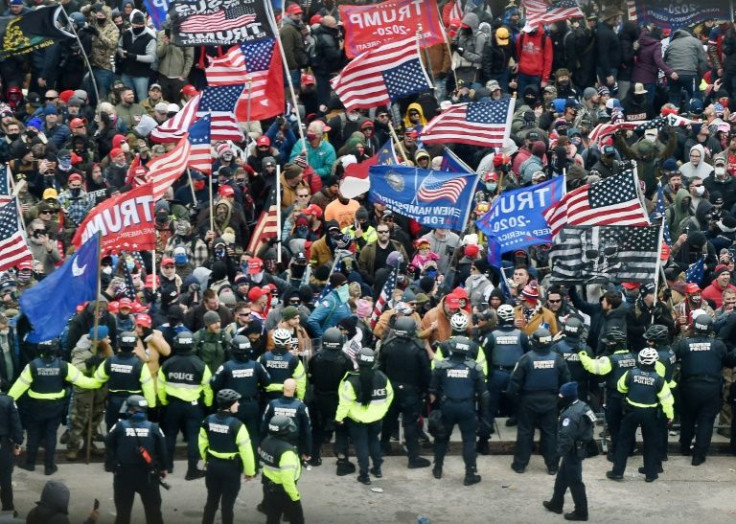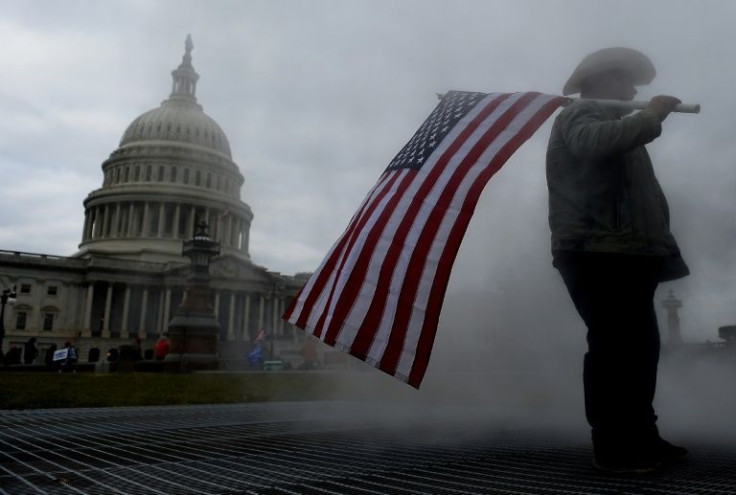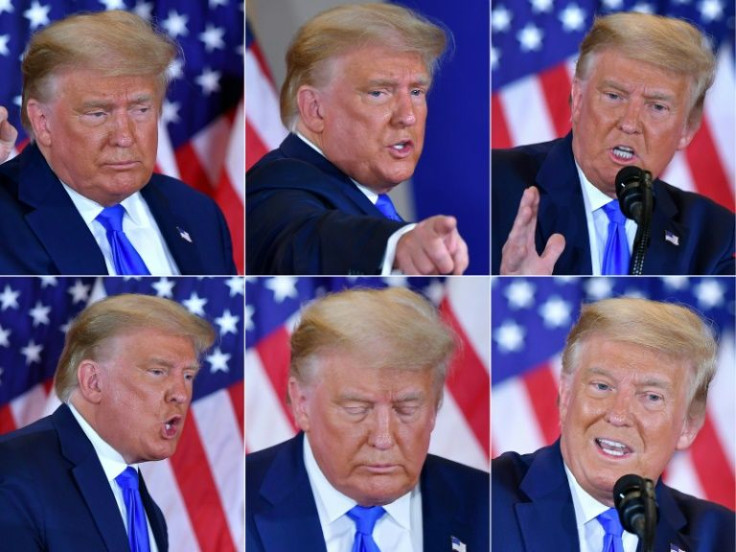January 6 Assault On The US Capitol: A Glossary
Thousands of supporters of then-president Donald Trump stormed the US Capitol on January 6, 2021 in a bid to prevent the certification of Democrat Joe Biden's election victory.
Was it an insurrection? An attempted coup? A riot?
Trump has claimed it was a "completely unarmed protest" by American "patriots" against a "stolen" election?
Here is a look at some of the terms surrounding the day:

At the heart of the events of January 6 is Trump's "Stop the Steal" campaign, a claim that he -- not Biden -- won the November 3, 2020 presidential election and that it was marred by fraud.
Trump's spurious assertion that he won -- despite all evidence to the contrary - has come to be known as the "Big Lie."

It is believed by about two-thirds of Republicans, according to various polls, who do not believe Biden was legitimately elected.
Congress was meeting on January 6 to certify the results of the vote after dozens of challenges had been dismissed as baseless by the courts and recounts had confirmed Biden's victory in key states.
Shortly before the assault on the Capitol, Trump addressed thousands of flag-waving supporters at a rally near the White House and repeated his claims of a "rigged" election.
He turned up the pressure on Mike Pence to block certification of the results, but the vice president declined to do so, saying his role as presiding officer over the process was "largely ceremonial."

During the rally which immediately proceeded the assault on the Capitol, Trump said his supporters needed to "fight like hell" to prevent the election from being "stolen."
The article of impeachment approved one week later by the House of Representatives accused Trump of "incitement of insurrection."

"Donald John Trump engaged in high Crimes and Misdemeanors by inciting violence against the Government of the United States," the article reads.
Trump, in his speech at the Ellipse, "willfully made statements that, in context, encouraged -- and foreseeably resulted in -- lawless action at the Capitol," it said.
More than 700 people have been arrested on various charges including assaulting police officers and conspiring to obstruct a congressional proceeding.
No one has been formally charged, though, with the crime of insurrection, the term most widely used by mainstream media to describe the events of the day.
Ten Republicans joined 222 Democrats in the House in voting to impeach Trump but he was acquitted by the Senate in a 57-43 vote.

A two-thirds majority of the 100-member Senate was needed for conviction.
The book "Peril" by Washington Post reporters Bob Woodward and Robert Costa sheds light on some of the behind-the-scenes scheming by the White House and outside advisors to keep Trump in power.
The maneuvers have been characterized by constitutional scholar Laurence Tribe, Democratic lawmakers and others as a coup attempt.
They include a personal effort by Trump to pressure Georgia election officials to flip enough votes to give him victory over Biden in the southern state.
A six-point memo drawn up by conservative lawyer John Eastman sketched out a plan that would have had Pence reject enough Biden electors during the congressional certification of the results to hand victory to Trump.
"This memo outlines a coup," said Representative Adam Kinzinger, a Republican from Illinois who voted to impeach Trump and is now serving on the House committee investigating the January 6 assault on the Capitol.
According to The Washington Post, the efforts to maintain Trump in power were coordinated from a "command center" at the Willard Hotel in downtown Washington.
Besides Eastman, other participants included Trump's lawyer, former New York mayor Rudy Giuliani, and the former White House strategist Steve Bannon.
Trump and his Republican supporters have sought to change the narrative of a day which left five people dead and 140 police officers injured.
Trump, in a recent statement announcing plans to hold a news conference at his Mar-a-Lago home on Thursday, asserted that January 6 was a "completely unarmed protest." Trump has since cancelled that news conference.
"Remember the insurrection took place on November 3rd, it was the completely unarmed protest of the rigged election that took place on January 6th," Trump said.
In an interview last March with Fox News, Trump claimed the crowd that stormed the Capitol posed "zero threat."
"Look, they went in -- they shouldn't have done it -- some of them went in, and they're hugging and kissing the police and the guards, you know?" he said.
"They had great relationships. A lot of the people were waved in, and then they walked in, and they walked out," Trump said.
Other Republicans have sought to downplay the violence of the day.
Representative Andrew Clyde of Georgia compared it to a "normal tourist visit" -- despite photographs showing him helping police barricade the doors of the House chamber.
© Copyright AFP {{Year}}. All rights reserved.




















